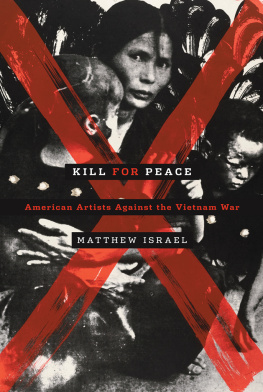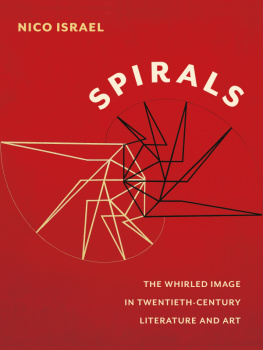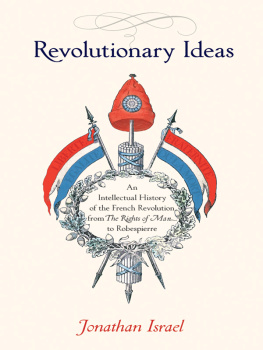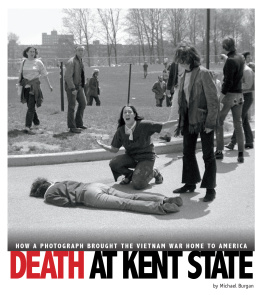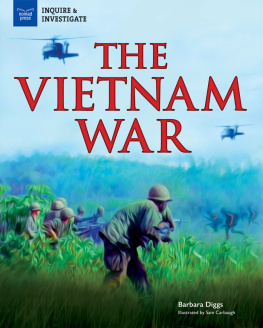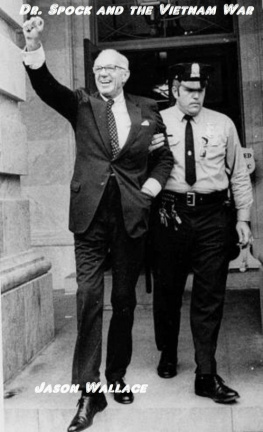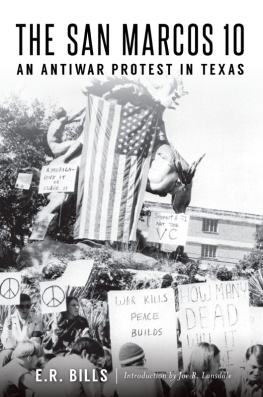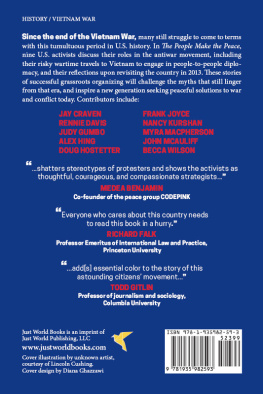KILL FOR PEACE
American Artists Against the Vietnam War
MATTHEW ISRAEL

UNIVERSITY OF TEXAS PRESS
AUSTIN
The publication of this book was supported in part by the UT Press Fine Arts Endowment, funded by the Mattsson McHale Foundation, the Stillwater Foundation, Frances Dittmer, Jeanne and Michael Klein, and Jean and Dan Rather.
Copyright 2013 by Matthew Israel
All rights reserved
First edition, 2013
Requests for permission to reproduce material from this work should be sent to:
Permissions
University of Texas Press
P.O. Box 7819
Austin, TX 78713-7819
http://utpress.utexas.edu/index.php/rp-form
Library of Congress Cataloging-in-Publication Data
Israel, Matthew (Matthew Winer)
Kill for peace : American artists against the Vietnam War / by Matthew Israel.
p. cm.
Includes bibliographical references and index.
ISBN 978-0-292-74542-1 (cloth : alk. paper)
ISBN 978-0-292-74830-9 (pbk. : alk. paper)
1. Art, American20th centuryThemes, motives. 2. ArtPolitical aspectsUnited StatesHistory20th century. 3. Art and societyUnited StatesHistory20th century. 4. Vietnam War, 19611975Protest movementsUnited States. I. Title.
N6512.I87 2013
701'.03097309046dc23
2012042868
doi:10.7560/745421
ISBN 978-0-292-74543-8 (library e-book)
ISBN 978-0-292-75303-7 (individual e-book)
To Samara, Ben, Amina, Mom, and Dad;
and in memory of Pop.
It is essential that the community of artists and civilized men register dissent, outrage, and infinite grief as spokesmen for the conscience of society.
DORE ASHTON
In short, America was... engaged in a battle at home, a combat whose subjectthe bloody military incursions being fought thousands of miles awayexisted only in absence. In this country, the antiwar movement and the defenders of the Pentagon were ultimately waging a war of representation, a battle of words and images.
MAURICE BERGER
One continuing sociological characteristic of these rebellions of the oppressed has been their spontaneous, short-term character. They have come and they have gone, having such effect as they did. When the next such rebellion came, it normally had little explicit relationship with the previous one. Indeed this has been one of the great strengths of the worlds ruling strata throughout historythe non-continuity of rebellion.
GIOVANNI ARRIGHI
Contents
Acknowledgments
Throughout this project many people and institutions provided me with support. I would like to thank the following: Vito Acconci, Carl Andre, Artsy Daniel Belasco, Catherine Belloy, Maurice Berger, Judith Bernstein, Mel Bochner, Kay Brown, Charles Cajori, G. B. Carson, Vija Celmins, the Center for the Study of Political Graphics, Seymour Chwast, Carter Cleveland, Lincoln Cushing, Sebastian Cwilich, the Department of Art History at New York University, Frederick Doner, David Douglas Duncan, Erin Edmison, the Felix Gonzalez-Torres Foundation, James Foster, Gagosian Gallery, Rupert Garcia, the Getty Research Institute, Evelyn Glaubman, Robert Goodnough, Red Grooms, Priscilla Harmel, Dakin Hart, Jon Hendricks, Steven Heller, Alessandra Henderson, Chrissie Iles, Ann Imbrie, Robert Indiana, the Institute of Fine Arts at New York University, (my brother) Jesse Israel, Pepe Karmel, Stephen Koch, Jesse Krotick, Lucy Lippard, Robert Lubar, Matthew Marks Gallery, Marc Morrel, Robert Morris, The Museum of Modern Art, New York Molly Nesbit, Linda Nochlin, Michele Oka Doner, the Paula Cooper Gallery, David Platzker, Violet Ray, Martha Rosler, Peter Saul, Carolee Schneemann, Simon Shagrin, Alan Shapiro, Ava Shapiro, Michal Shapiro, Joel Smith, May Stevens, Robert Storr, Priscilla Soucek, Jeffrey Weiss, (my grandmother) Evelyn Winer, and the Whitney Museum of American Art.
Introduction
During the American phase of the Vietnam War (19641975), a substantial number of American visual artists created works that were either conceived of or interpreted as being antiwar. Significant examples of this politically engaged production, which encompassed painting, sculpture, performance, installation, posters, short films, and comicsand which ranged from the most representational to the most abstract forms of expressionhave been seen often since the war in exhibitions devoted to individual artists, or occasionally in exhibitions concerning the broader relationship between art and war.
Two exhibitions have attempted a survey of this material: Maurice Bergers 1988 Representing Vietnam at Hunter College and half of Lucy Lippards traveling 1990 exhibition A Different War: Vietnam in Art (the other half of the exhibition concerned art created after the end of the war). Additionally, art-historical scholarship outside of exhibitions has dealt with this material through monographic studies, within broad surveys of art and war, or in projects concerning the relationship between avant-garde practice and leftist politics, such as Francis Frascinas Art, Politics, and Dissent: Aspects of the Art Left in Sixties America (1999) and Julia Bryan-Wilsons Art Workers: Radical Practice in the Vietnam War Era (2009).
To date, however, art history has not produced a suitable survey of this work. Consequently, we know little about the overall character of antiwar art production and its producers during the Vietnam War; and the greater definition of what antiwar art was during the period remains quite vague.
Accordingly, a greater understandingusing a range of art-historical methodsof the collective nature of antiwar art, both its producers and its publicand therefore a refined but also expanded definition of what antiwar art was in the United States during the Vietnam Waris the purpose of this book.
sustained bombing of the country (code-named Operation Rolling Thunder) in response to communist attacks of South Vietnamese army installations in Pleiku in early 1965. Against this background, the chapter turns to American domestic dissent regarding the war. The first major antiwar protests in the United States were organized. College students mobilized for huge marches in Washington, DC, New York City, and Berkeley. In addition, the first teach-ins took place. These were lectures given to students outside of class hours by experts or academics engaged with U.S. foreign affairs. American intellectuals began to write against the conflict in significant numbers in major periodicals, such as The Nation, the New Yorker, Harpers, and the New York Review of Books.
begins with the first protests by American artists in 1965. Artists initial antiwar actions were what I define (within what will in this book emerge as a general typology for antiwar protest) as extra-aesthetic actions. This category of protest (nothing new to protest in the least) encompassed an array of strategies of engagement: marches, advertisements, strikes, walkouts, and petitions. These strategies in themselves also suggested an assortment of aspirations. Chief among them were raising awareness of the irrationality of specific actions of the U.S. government, and shutting down art institutions and art-making in order to propose that art could not support war-making. Extra-aesthetic actions occurred throughout the war, but inasmuch as they lacked a visual aspect or did not relate to what could be considered an art context, I label them extra-aesthetic. (In this way these actions often resembled those undertaken by nonartist protest groups.)
Extra-aesthetic actions were one of the most common means by which American artists protested over the entire course of the war, and by the end of the war these actions had involved more artists than any other type of artistic engagement. This fact stands in contrast to a prevalent conception, based on a scholarly reliance on the activities of a few avant-garde artists, that the majority of politically active artists began their protest making works of art, and, in a manner of radical progression, gravitated toward these types of more immediate actions after finding engaged artworks to be ineffective.
Next page
